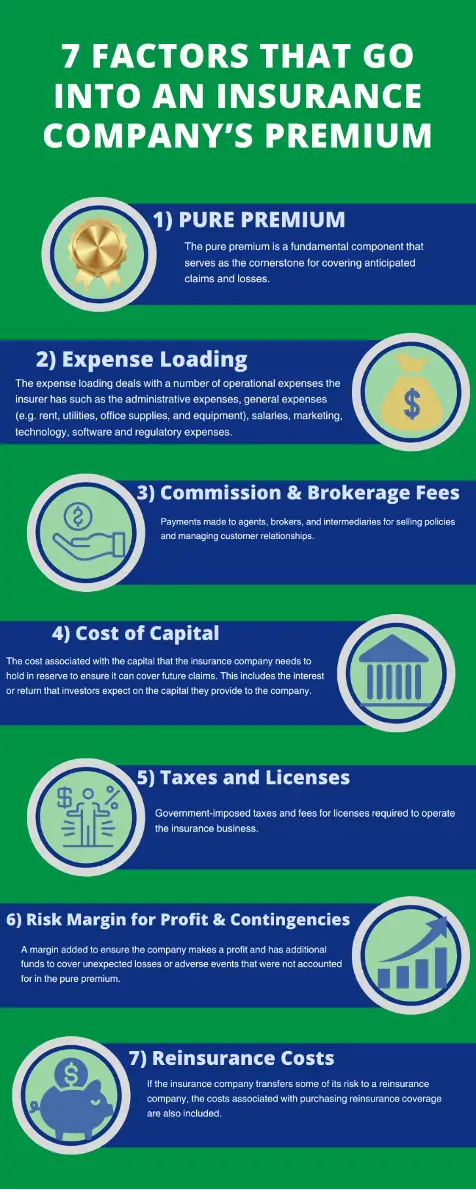Car insurance is a contract between you and an insurance company that protects you financially in case of accidents or damage to your vehicle. It typically provides coverage for damage to your car, damage to other vehicles or property, medical expenses for injuries sustained in an accident, and liability coverage for legal responsibility arising from an accident.
Here’s why you need car insurance:
1. **Legal Requirement**: In most jurisdictions, having car insurance is a legal requirement. Driving without insurance can lead to fines, license suspension, or even legal action.
2. **Financial Protection**: Car insurance provides financial protection against the costs associated with accidents, including repairs to your vehicle or another person’s vehicle, medical expenses, legal fees, and more. Without insurance, you would be responsible for covering these costs out of pocket, which can be substantial and potentially financially devastating.
3. **Protection Against Uninsured Drivers**: Even if you’re a safe driver, you can still be involved in an accident caused by someone else who doesn’t have insurance or doesn’t have enough coverage. Your insurance policy can provide coverage for damages in such situations.
4. **Peace of Mind**: Knowing that you’re financially protected in case of an accident can give you peace of mind while driving. Accidents can happen unexpectedly, and having insurance ensures that you’re prepared for such events.
5. **Lender Requirement**: If you finance or lease your car, the lender may require you to have comprehensive and collision coverage to protect their investment until you’ve paid off the loan or lease.
Overall, car insurance is essential for protecting yourself, your vehicle, and others on the road. It provides financial security and ensures that you comply with legal requirements, making it a crucial aspect of responsible vehicle ownership.
Households who have recently renewed their home or car insurance may have been taken aback by the noticeable increase in their monthly premiums. This trend isn’t isolated but rather spans across the insurance industry as a whole. For instance, according to data from the Association of British Insurers (ABI) in 2024, motor insurance saw an average increase of 25% in 2023 compared to the previous year, while the average premium for combined buildings and contents policies rose by 19% year-on-year.
Specifically, private motor insurance premiums in the UK averaged £627 between October and December 2023, marking a 12% rise from the preceding quarter as reported by ABI in 2024. Traditionally, insurance premium hikes have tended to correlate with inflation rates. However, recent trends indicate a significant surge in premiums surpassing the average rates of inflation.
Illustrated in Figure 1, data spanning from January 2021 to January 2024 showcases a comparison between the retail price index (RPI), a gauge of inflation encompassing all items, and two distinct insurance-related RPIs: dwelling insurance and ground rent RPI, along with vehicle tax and insurance RPI. The chart vividly illustrates a notable spike in insurance-related RPI, which has escalated by multiples beyond the overall RPI for all items in recent years.
How are insurance premiums determined?
In delving into the considerable increase in insurance premiums, it’s imperative to grasp the intricate process behind how these premiums are set.
At its core, insurance is a risk management endeavor for companies. To effectively navigate this risk, insurers embark on a meticulous calculation of their anticipated future claims.
Various factors come into play in this calculation. Historical data on past claims offers a foundational insight, alongside considerations like the size of the insured policy pool (with larger pools often yielding more predictable claims) and foreseeable trends that could influence future claims, such as shifts in weather patterns.
Augmenting these assessments are the expertise and judgment of actuaries and underwriters. Actuaries employ mathematical and statistical models to gauge and mitigate financial risks, while underwriters meticulously evaluate and price insurance policies based on risk analysis.
The culmination of these efforts is the determination of the ‘pure premium,’ often referred to as the risk premium. This represents the portion of the premium earmarked solely to cover claims, excluding factors like overheads and profit.
The risk premium is then amalgamated with other associated costs, as depicted in Figure 2, to formulate what’s termed an ‘office premium.’ This office premium stands as the tangible price tag that customers pay for their insurance coverage, encapsulating the comprehensive cost of providing insurance services, managing the company, and ensuring profitability.
Figure 2: Factors affecting insurance premiums

Let’s consider UK motor insurance as a case in point.
According to the Association of British Insurers (ABI), the lion’s share of the policy cost, accounting for 30%, is earmarked for injury claims. This underscores that a substantial portion of the insurance premium is designated to mitigate the risk of the insured driver causing harm to other drivers, passengers, or pedestrians.
Following closely behind, at 20%, is the allocation for damage to the insured driver’s own vehicle. This facet covers expenses associated with repairing or replacing the insured vehicle in the aftermath of an accident or other forms of damage. Damage to other vehicles and property constitutes 19% of the insurance cost.
The residual components of the policy cost encompass theft (4%), replacement vehicles (4%), uninsured drivers (4%), and windscreens (2%).
When these elements are tallied, the pure premium or risk premium encompasses roughly 83% of the total premium outlay.
The remaining 17% is comprised of overheads, encompassing the operational expenses of running an insurance firm, including salaries, rent, utilities, and other administrative costs.
Additionally, clients will incur a commission payable to their financial adviser. It’s worth noting that the government levies an insurance premium tax, adding an extra layer of expense atop the insurance coverage.
What might affect the cost of insurance premiums?
It’s essential to recognize that inflation metrics, such as the consumer price index (CPI), the consumer price index including owner occupiers’ housing costs (CPIH), and the retail prices index (RPI), rely on a ‘basket of goods’ methodology.
The reported figure represents a weighted average of all the underlying goods and services, each subject to their unique rates of inflation. For many inflation indices like the CPIH, the weights assigned to different items in the basket reflect their significance in the typical household expenditure (ONS, 2016).
Components essential to motor insurance claims, such as raw materials necessary for repairs like metals and paint, continue to witness notably high rates of inflation. These escalating costs inevitably find their way into insurance premiums.
In the context of the United States, a 2021 report from the Bank of America highlights a stark illustration: “In the past year, the raw material cost in an average US vehicle has seen a steady ascent, surging ~87% from a low of approximately $2,200/unit in April 2020 to approximately $4,125/unit in May 2021.”
Moreover, automobiles are evolving to feature increasingly sophisticated and costly technology, leading to elevated repair expenses over time. CCC Intelligent Solutions, a firm tracking automotive claims data, corroborates this trend. They note a consistent uptick in vehicle repair costs in recent years, attributed to advanced safety features such as sensors and cameras, which are pricier to repair or replace.
In fact, the total cost of repair (TCOR) has demonstrated a year-on-year escalation since 2018 across all vehicle categories, spanning from new cars to those aged seven years and older.
Conclusion
The surge in insurance premiums represents a multifaceted issue shaped by various economic, industry-specific, regulatory, environmental, and social factors.
Analyzing the underlying causes of the recent sharp increase in insurance premiums reveals that certain factors exert a more pronounced influence than others. Notably, the soaring costs of vehicle repairs, exacerbated by supply chain disruptions, emerge as a primary driver of this escalation.
Looking forward, it’s conceivable that premiums may continue their upward trajectory as insurers adjust their risk assessments to accommodate dynamic factors. However, conjecturing that premiums have settled into a ‘permanent new plateau’ could underestimate the innate volatility and adaptability inherent in the insurance sector.
Therefore, while many insurance premiums are expected to maintain elevated levels relative to historical norms, their future trajectory hinges on the evolution of the intricate and interconnected factors discussed above.
Amidst grappling with these challenges and facing an inherently uncertain future for premiums, the overarching objective remains striking a delicate balance. This entails ensuring sufficient reserves for claims, sustaining profitability, and offering accessible coverage to consumers. This equilibrium is paramount for the sustainability of the insurance industry and the safeguarding it provides to individuals and businesses alike.
